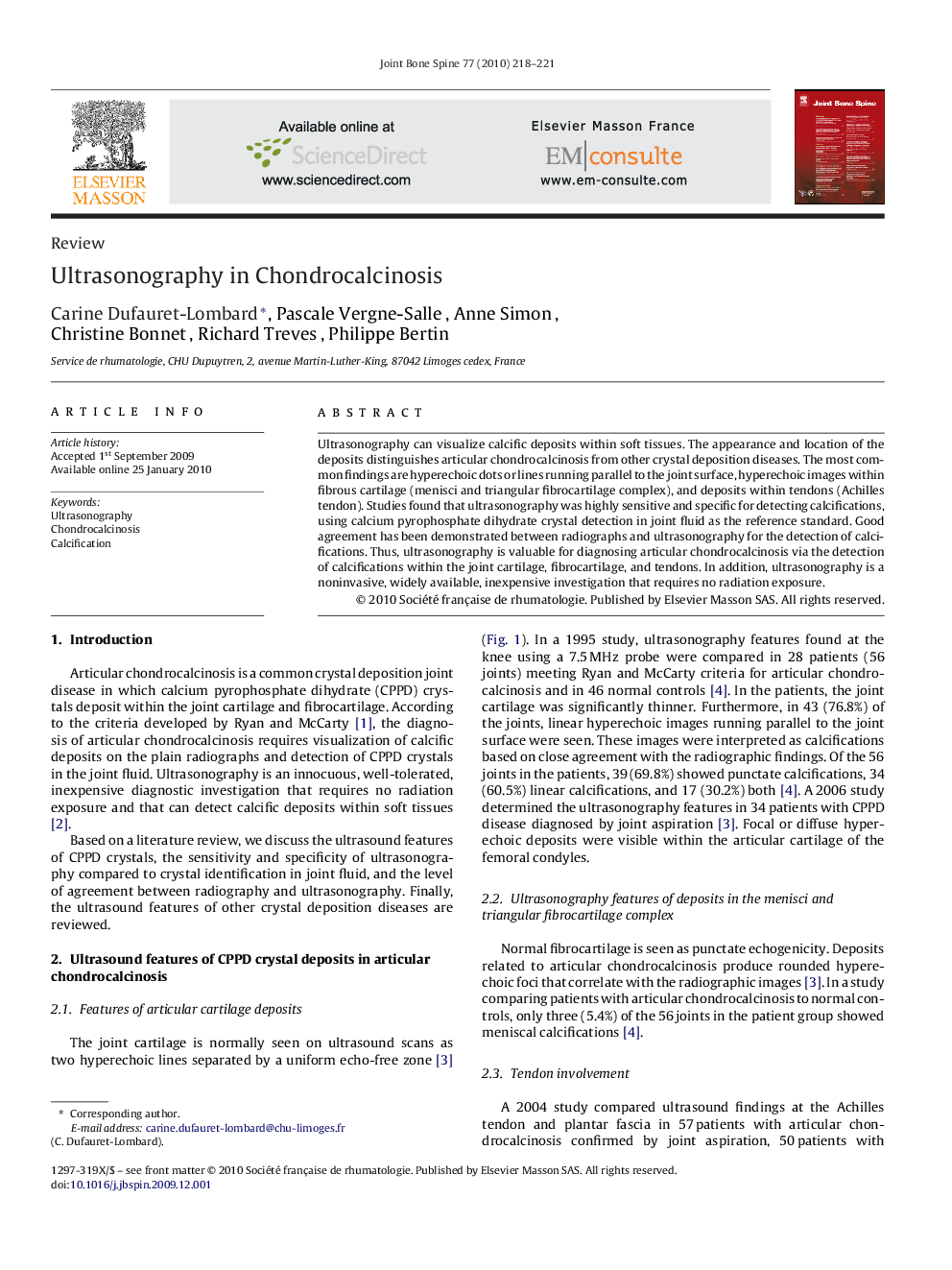| Article ID | Journal | Published Year | Pages | File Type |
|---|---|---|---|---|
| 3366867 | Joint Bone Spine | 2010 | 4 Pages |
Ultrasonography can visualize calcific deposits within soft tissues. The appearance and location of the deposits distinguishes articular chondrocalcinosis from other crystal deposition diseases. The most common findings are hyperechoic dots or lines running parallel to the joint surface, hyperechoic images within fibrous cartilage (menisci and triangular fibrocartilage complex), and deposits within tendons (Achilles tendon). Studies found that ultrasonography was highly sensitive and specific for detecting calcifications, using calcium pyrophosphate dihydrate crystal detection in joint fluid as the reference standard. Good agreement has been demonstrated between radiographs and ultrasonography for the detection of calcifications. Thus, ultrasonography is valuable for diagnosing articular chondrocalcinosis via the detection of calcifications within the joint cartilage, fibrocartilage, and tendons. In addition, ultrasonography is a noninvasive, widely available, inexpensive investigation that requires no radiation exposure.
